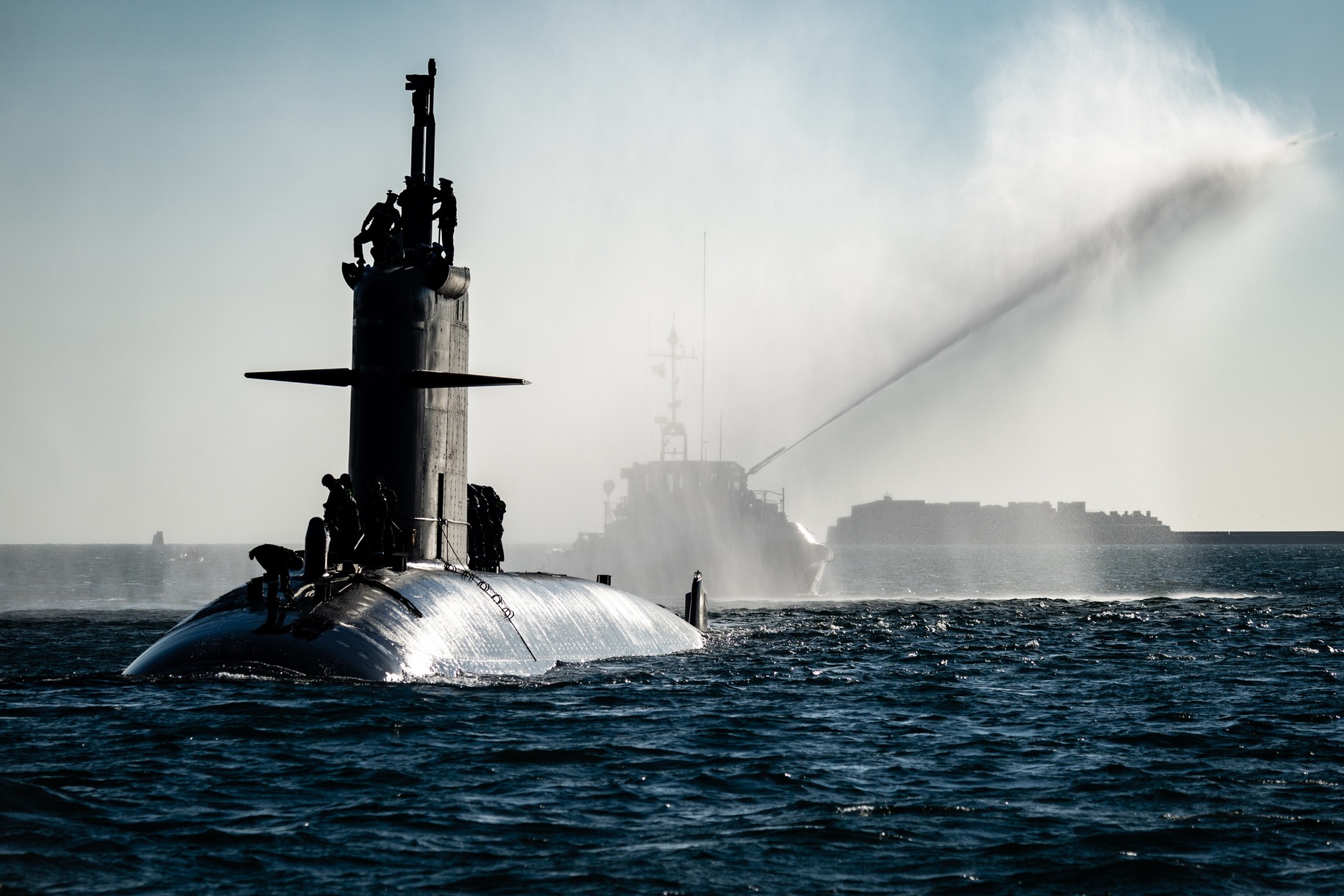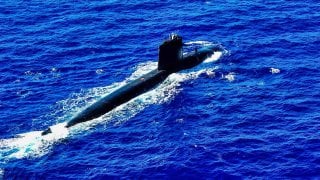France Used a Small Nuclear Attack Submarine to 'Sink' A Navy Aircraft Carrier
The American Nimitz-class aircraft carrier USS Theodore Roosevelt was theoretically sunk by a foreign submarine in 2015. In this case, it was one of France’s absurdly heavily armed Rubis-class nuclear-powered submarines that “sank” the carrier, during a joint exercise in the North Atlantic.
Summary: The U.S. Navy's reliance on its formidable fleet of nuclear-powered aircraft carriers, the backbone of its power-projection capabilities, is under scrutiny. Critics, including myself, question the carriers' vulnerability amidst the proliferation of anti-access/area denial (A2/AD) systems by adversaries. Notably, incidents during wargames and exercises—such as the Swedish Gotland-class submarine's success in "sinking" a U.S. carrier in 2005, a Chinese submarine's undetected approach to the USS Kitty Hawk in 2007, and the French Rubis-class submarine's theoretical sinking of the USS Theodore Roosevelt in 2015—highlight the carriers' susceptibility to submarine threats. These events underscore the evolving challenges the U.S. Navy faces in ensuring the security of its carriers against stealthy, non-nuclear submarines and the imperative for developing more effective countermeasures.
The U.S. Navy has a real problem on its hands. It has invested tens of billions of dollars to build a large fleet of nuclear-powered aircraft carriers. These carriers are the pride and joy of the Navy’s surface fleet and the primary source of its power-projection capabilities.
Staffed by the Navy’s best sailors, brimming with potent defenses and advanced sensors, and protected by the country’s most advanced warplanes and a formidable flotilla of other warships, Washington views its flat tops as virtually invincible.
Pride, as they say, goes before the fall.
Those who routinely read my columns at The National Interest understand my skepticism of the carrier’s relevance in today’s environment of anti-access/area denial (A2/AD) systems being deployed by America’s enemies. You also likely know of my support for the submarine over the aircraft carrier when it comes to the preferred mode of power projection in such contested environments.
What few realize is that our carriers, since 2005, have been more vulnerable to enemy submarines than what most Navy planners are willing to admit.
Back in 2005, the tiny Swedish-built, Gotland-class submarine took part in U.S. Navy wargames. During those wargames, this non-nuclear Swedish sub was able to sneak into the aircraft carrier’s protective sphere and “sink” the U.S. carrier.
As if that were not jarring enough for the Navy, an old Song-class diesel submarine from China’s People’s Liberation Army Navy surprised the crew of the USS Kitty Hawk during a large U.S. Navy exercise in the Pacific Ocean in 2007. The Chinese submarine got within visual range – torpedo range – of the Kitty Hawk, and the crew mocked the Americans by appearing on top of their submarine and waving at the carrier.
The carrier’s advanced suite of sensors did not detect the Chinese submarine until after it sat within firing range of the carrier.
A French Sub on Maneuvers
As it turns out, the American Nimitz-class aircraft carrier USS Theodore Roosevelt was theoretically sunk by a foreign submarine in 2015. In this case, it was one of France’s absurdly heavily armed Rubis-class nuclear-powered submarines that “sank” the carrier, during a joint exercise in the North Atlantic. The French submarine Saphir managed to penetrate the Theodore Roosevelt’s defensive perimeter and secret itself beyond the great warship’s anti-submarine defenses.
It's a significant problem that the U.S. Navy has apparently been unable to correct. In war, it only takes one daring commander testing the limits of his system to get in a “lucky” shot at a supposedly indestructible warship like a U.S. carrier.
For its part, the Rubis class is an interesting platform.
Designed by the French Navy to be the smallest nuclear-powered submarine in the world, the Rubis class entered service in 1983. The first generation of these submarines was dangerously noisy. The noisier a submarine is underwater, the less useful it is for a navy to deploy it – stealth and deception are powerful agents for a submarine force.
Understanding the Rubis-class Submarine
The Rubis class has an extremely complex and lethal weapons control system. Its armament package is similarly impressive. According to Maya Carlin, “it can carry up to 14 missiles and torpedoes in a mixed load.” The submarine has a complex suite of defensive sensors that help to protect it from foreign threats on the high seas.
Because of its small size, it is a more maneuverable nuclear-powered submarine, as well as harder to track.

All this explains why and how a Rubis-class vessel was able to “sink” a Nimitz-class aircraft carrier like the USS Theodore Roosevelt. The greater question is: What countermeasures has the Navy taken to better protect its flattops from this kind of low-rent attack?
The Gotland-class, Song-class, and Rubis-class submarines are all sophisticated to a degree, but these systems should not be able to get in as close as they have gotten to U.S. carriers and threaten them with torpedo attacks.
With the threat of A2/AD getting more powerful with each day, and with these submarines posing a threat to America’s flattops, it might be time to have a plan to keep these warships in reserve until the Navy can craft an effective defense.
About the Author
Brandon J. Weichert, a National Interest national security analyst, is a former Congressional staffer and geopolitical analyst who is a contributor at The Washington Times, the Asia Times, and The-Pipeline. He is the author of Winning Space: How America Remains a Superpower, Biohacked: China’s Race to Control Life, and The Shadow War: Iran’s Quest for Supremacy. His next book, A Disaster of Our Own Making: How the West Lost Ukraine, is due October 22 from Encounter Books. Weichert can be followed via Twitter @WeTheBrandon.


